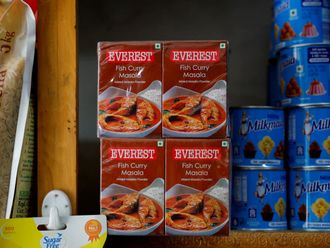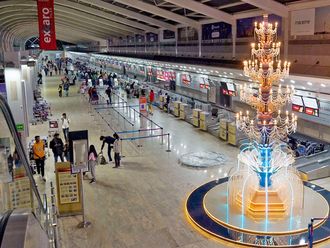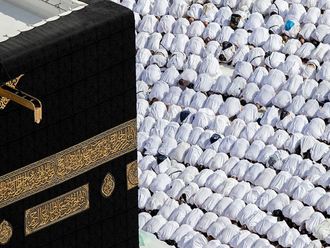Dubai A nondescript, single-storied structure with an earthen-tiled roof on Harish Chatterjee Street in the southern part of Kolkata and a tree-lined, imposing bungalow in the posh Poes Garden area of Chennai are as far removed from one another, as chalk and cheese are. Yet, the matrix of electoral politics in India has somehow brought these two much talked-about residences closer to each other like never before — notwithstanding the spatial and ideological chasm between the residents at those two addresses.
Last Thursday, as results for assembly elections in Assam, Kerala, Tamil Nadu, West Bengal and Puducherry were announced, two sitting Chief Ministers, J. Jayalalitha (68) of Tamil Nadu and Mamata Banerjee (61) of West Bengal were on a roll — having bucked the anti-incumbency factor with resounding majorities. While Jayalalitha became the first Chief Minister in Tamil Nadu in 32 years to return to power for a second consecutive term, Mamata’s Trinamool Congress (TMC) retained its hold over the state with the largest-ever tally by a single party in Bengal’s electoral history.
“Amma” -- the popular nomenclature for Jayalalitha — and “Didi” -- the name by which Mamata has found almost universal acceptance among friend and foe alike — are cast in moulds that are as different as the whiff of an early-autumn breeze is from the scorcher of a midsummer Sirocco.
Jayalalitha, given her early dalliance with stardom and her brush with the tinsel world, has always loved to live life in all its abundance and opulence. So much so, that the number of saris in her wardrobe and her collection of gold ornaments generate as much heat in boardroom discourse as in evening drawing room chats! Her brush with big-ticket corruption cases has even seen her spend time behind bars, while her tryst with political fortunes has mostly been in keeping with the state’s revolving-door legacy.
In comparison, Mamata’s has been a career built on a minimalist approach to life. From her ubiquitous cotton saris and flip-flops to the humble Hyundai Santro in which she is driven to the state secretariat each work day of the week, “Didi” has built her brand equity around muted shades and a homespun fabric that’s rich in the vagaries of a life that’s almost pedestrian. This low-profile public image plays a perfect foil to the high-octane world of 24X7 politics that she swears by. That is why, the first time she lays her hands on an iPhone or clicks pictures on her new iPad, during one of her trips abroad, it’s news.
And yet, in spite of all these differences between the two ladies, there’s something that connects Poes Garden with Harish Chatterjee Street. And that is the ability of these two ladies to feel the pulse of the public. Both have done it with aplomb — each in her own inimitable way. That is precisely why Tamil Nadu breaks with tradition and blesses “Amma” with a second term, something it hasn’t done with any other chief minister in the last three decades; and Bengal reposes its faith in “Didi”, making sure no other party or leader gets anywhere near the chief minister’s chair. Both the ladies have resorted to populist measures, like Jayalalitha with rice at Rs2 per kilo and heavily subsidised Amma Canteens; and Mamata with free bicycles for the youth and cash incentives for the girl child. ‘That’s ruining the state exchequer’, howled political opponents. But at the hustings, such social and financial largesse found immense traction. Both Jayalalitha and Mamata have had to battle corruption charges. In case of Jayalalitha, the barbs were directed at none other than her with charges of disproportionate assets. In Mamata’s case, some of her party and Cabinet colleagues’ faced investigations in a chit fund scam and were targeted by a sting operation in which money was shown to have changed hands over promises of undue favours. But at the end of the day, both “Amma” and “Didi” have come out with flying colours. “Walk into any household in rural Bengal and talk about corruption. You will be quickly reminded about that road outside that has had a fresh layer of bitumen and those street lights that work,” said a popular Bengali film and TV personality during a chat show recently.
In January 1993, Mamata was literally plucked out by the police from the Writers’ Buildings, after she started a sit-in demonstration in front of the then chief minister late Jyoti Basu’s chamber, seeking justice for a physically-challenged rape victim. A bruised, humiliated Mamata in tears was shunted into the lock-up at the Lal Bazar Police Headquarters for a few hours, despite the fact that she was then a Union minister. Mamata took it on her chin and promised to return to the Writers’ one day — only as the chief minister. In 1989, a distraught Jayalalitha left the Tamil Nadu assembly in tears after a section of Dravida Munnetra Kazhagam legislators physically assaulted her. She too promised to return one day — only as the CM.
Both have walked back to claim their places in their respective state secretariats — and in the hearts of the masses. Love them or loathe them, but you just can’t ignore them.












